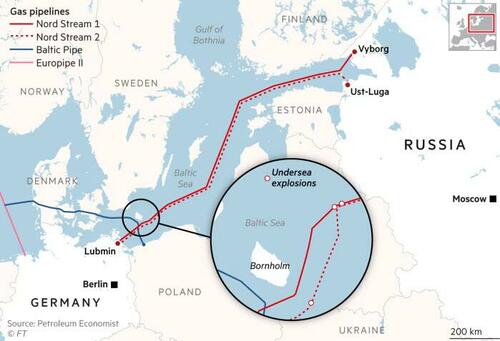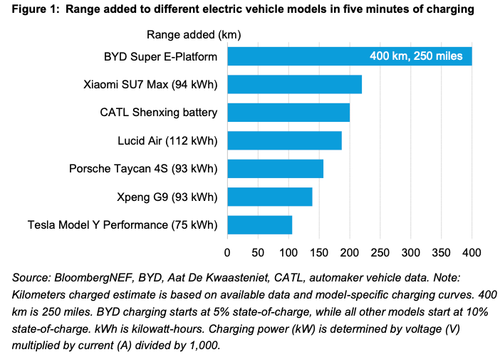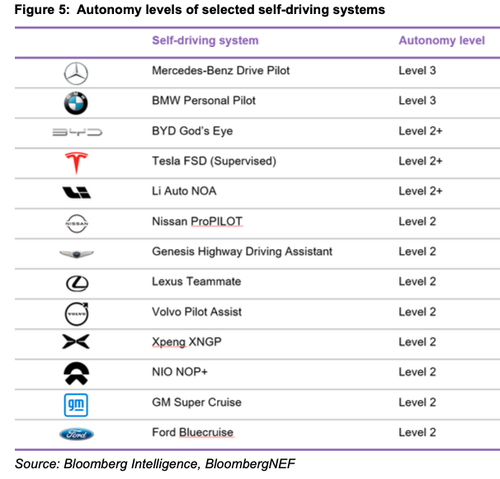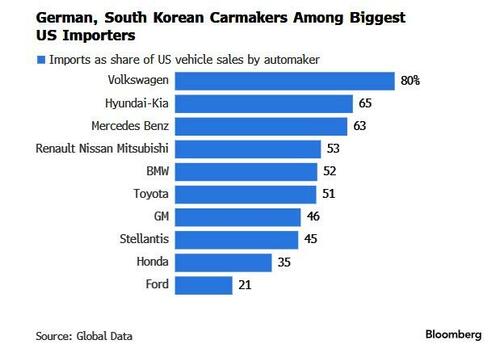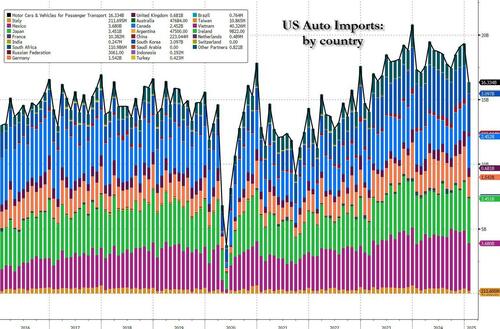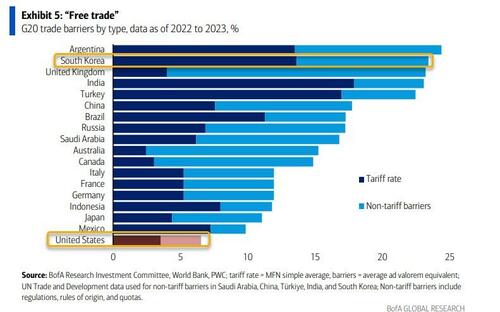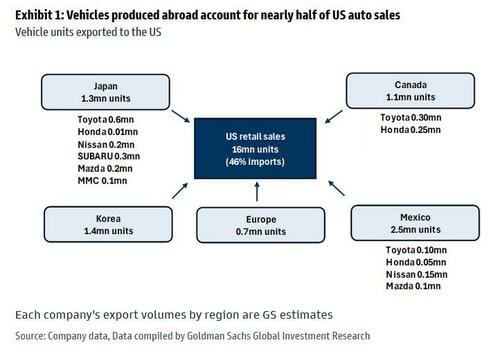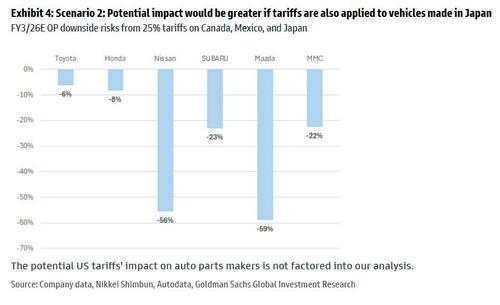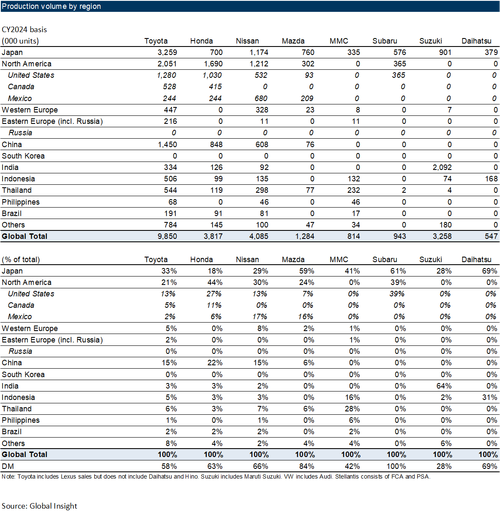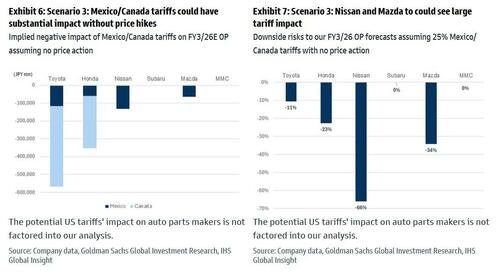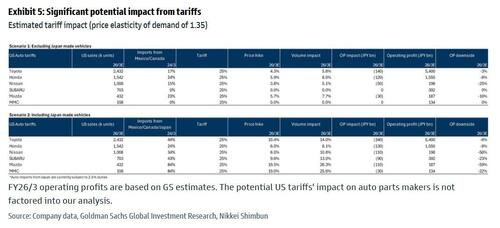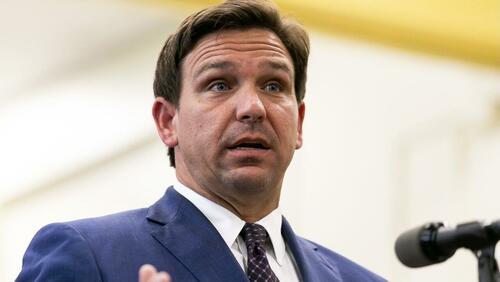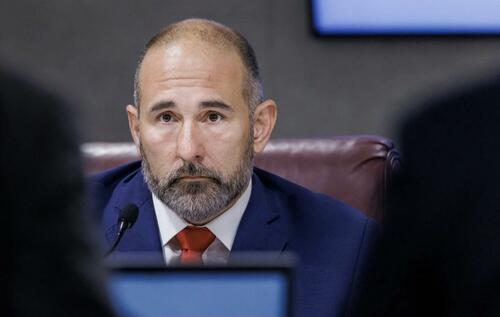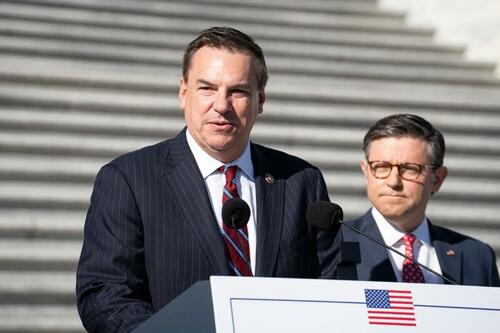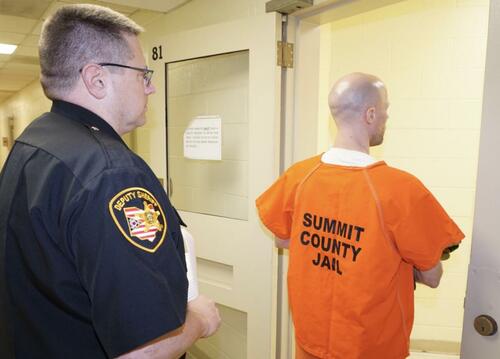Authored by Michael Snyder via The Economic Collapse blog,
The entire system has been designed to generate as much revenue from your activity as possible until someday you eventually drop dead.
It is tax season, and that means that it is time to feed the largest and most bloated government in the history of the entire planet once again. Of course the federal income tax is just one of the ways that they are systematically draining your wealth. As you will see below, there are literally dozens of taxes that Americans must pay each year.
Many of our politicians seem to revel in inventing ways to extract money out of us, and that needs to stop.

Most Americans are working extremely hard, and yet money seems to keep going out the other end faster than it is coming in.
The truth is that the entire system has been designed to take what you have away from you.
There are many ways that this is accomplished – taxation, inflation, debt, interest, fines, fees, tickets, government seizures and good old-fashioned corporate greed.
If you decided to just sit back and do nothing but hold on to the wealth that you already have, you would find out that it would disappear quite rapidly.
It is not an accident that most Americans are experiencing a declining standard of living. The system is rigged, and the rigging has not been in our favor.
The following are 55 ways that everything that you think that you own is being systematically taken away from you…
#1 Do you think that you own your home? You might want to think again. Most Americans that “own a home” are paying a mortgage. If you stop paying that mortgage you will lose that home. The number of foreclosures in the United States last year was up 174 percent from 2021, and mortgage delinquencies have been rising in recent months.
When homeowners get booted out of their homes, they don’t get their down payments back.
They also don’t get all of the mortgage payments that they have made back.
The banks get to keep the money and the homes.
Perhaps you have paid off your mortgage. Does that mean that you now “own your home”?
No, not really. Just refuse to pay your property taxes and see what happens. At best, you can say that you have the right to rent your home from the government.
In any event, the reality is that the banks now own more of “our homes” than we do.
Just check out your most recent mortgage statement and see how much “home equity” you actually have.
If you recently purchased your home, it probably isn’t much at all.
Things used to be far different in this country. Once upon a time, ordinary Americans owned most of the homes and most of the land in this nation.
But now the banks own most of it. Sadly, most American families that believe that they “own homes” are actually enslaved to 20 or 30 year debt contracts.
And if something happens and you are unable to keep making payments, you could lose everything.
#2 Do you think that you own your vehicle? You don’t own it if you are still making payments on it. Of course if you stop making payments you will rapidly lose that vehicle.
But even if it is paid off, you can only operate that vehicle if you do the following…
*You must pay the license fee.
*You must pay the car registration fee.
*You must pay the emissions inspection fee.
*You must pay the property taxes on that vehicle if that applies in your area.
*You must pay the tire taxes.
*You must pay the gas taxes.
If you have paid all of those taxes, then you are permitted to drive only where the government allows you to drive and only under the rules that the government sets for you.
But at least you “own” your vehicle, right?
#3 What about your possessions? Do you own them?
Well, yes, you probably own some possessions.
But that doesn’t mean that they are not enslaving you.
After all, did you use a credit card to pay for any of them?
If so, you could end up paying far more for your possessions than you originally thought that they cost.
#4 Do you own your education? Well, it is undeniable that nobody can ever take it away from you. But if you took out student loans to get your education, that debt may end up enslaving you for decades.
The borrower is the servant of the lender and student loan debt is more of a financial drain on Americans than ever before. Americans now owe more on their student loans than they do on their credit cards.
Today, Americans owe more than 1.7 trillion dollars on their student loans, which is a new all-time record.
#5 Will you protect your wealth if you put your money in the bank?
No, in fact your wealth will be systematically destroyed in the bank.
Inflation is a hidden tax on every single dollar that you own, because it destroys the value of all dollars in existence.
There are some Americans that have been saving money for decades, but those savings are being taxed into oblivion by inflation.
Just compare the price of a carton of 12 eggs five years ago to the price of a carton of eggs today.
When the cost of living goes up, the value of the money that we have put in the bank goes down.
#6 Insurance costs continue to soar. After insuring virtually everything in our lives, many of us barely have any money left over to actually live our lives with.
#7 State and local governments all over the nation have turned to ticket writing as a primary revenue source. They know that most people do not carefully follow the speed limit, and so they have turned that behavior into a revenue-generating tool.
#8 Some states have decided to simply confiscate wealth even if nothing has been done wrong. For example, some states are now aggressively seizing “unclaimed” safe deposit boxes. If you have a safe deposit box that you have not checked on in a while, you might want to make sure that it is still there.
#9 You might end up losing your valuables when you cross the border. U.S. border agents regularly seize laptops and other electronic devices as people cross the border. In many cases those items are never returned.
#10 If you don’t pay your property taxes, you will lose your home and it will likely be a big Wall Street bank that will end up owning it. The big Wall Street banks have been buying up thousands of tax liens and are making a killing by socking distressed homeowners with predatory interest, outrageous penalties and almost unbelievable legal fees.
#11 Of course the federal income tax is one of the biggest ways that our wealth is being drained. One of the primary reasons why the Federal Reserve and the IRS were established back in 1913 was to redistribute wealth. Wealth is transferred from hard working Americans to the U.S. government, and then it is redistributed to those that aren’t working or spent on some of the most wasteful programs imaginable.
Needless to say, federal taxes are just one of the taxes that we pay. The truth is that the average American pays dozens of different taxes each year. The following are just a few examples of the insidious forms of taxation that drain our wealth…
#12 Building Permit Tax
#13 Capital Gains Tax
#14 CDL License Tax
#15 Cigarette Tax
#16 Corporate Income Tax
#17 Court Fines (an indirect tax)
#18 Dog License Tax
#19 Federal Unemployment Tax (FUTA)
#20 Fishing License Tax
#21 Food License Tax
#22 Fuel Permit Tax
#23 Gasoline Tax
#24 Gift Tax
#25 Hunting License Tax
#26 Inheritance Tax
#27 IRS Penalties (tax on top of tax)
#28 Liquor Tax
#29 Local Income Tax
#30 Luxury Taxes
#31 Marriage License Tax
#32 Medicare Tax
#33 Payroll Taxes
#34 Phone Taxes
#35 Property Taxes
#36 Real Estate Tax
#37 Recreational Vehicle Tax
#38 Road Toll Booth Taxes
#39 Road Usage Taxes (Truckers)
#40 Sales Taxes
#41 School Tax
#42 Septic Permit Tax
#43 Social Security Tax
#44 State Income Tax
#45 State Unemployment Tax (SUTA)
#46 Toll Bridge Taxes
#47 Toll Tunnel Taxes
#48 Traffic Fines (indirect taxation)
#49 Trailer Registration Tax
#50 Utility Taxes
#51 Vehicle License Registration Tax
#52 Vehicle Sales Tax
#53 Watercraft Registration Tax
#54 Well Permit Tax
#55 Workers Compensation Tax
When you take all forms of taxation into account, there are some people that hand over more than 50 percent of their incomes to various levels of government each year.
Even the future is being taken away from us. The future is literally being stolen from our children and our grandchildren. They will be inheriting the 36 trillion dollar national debt that we have accumulated.
What we have done to future generations is unthinkable, and yet we continue to borrow colossal mountains of money.
When you base an entire economy on debt, eventually you end up with money problems that never seem to end. As a nation, we are now enslaved to a vicious spiral of debt that threatens to destroy everything that our forefathers worked so hard to build.
As the debt loads of our federal, state and local governments become even more burdensome, they are going to want even more money from us. For decades we gave in to new tax after new tax thinking that it would finally satisfy them.
But it never seems to be enough. They always want more.
Unfortunately, most Americans are so caught up in the “rat race” that they never take much time to think about who designed the race or why they are running it.
It is time to wake up.
We are being systematically abused by the control freaks that are running things, and it is time to say that enough is enough.
* * *
Michael’s new book entitled “Why” is available in paperback and for the Kindle on Amazon.com, and you can subscribe to his Substack newsletter at michaeltsnyder.substack.com.

